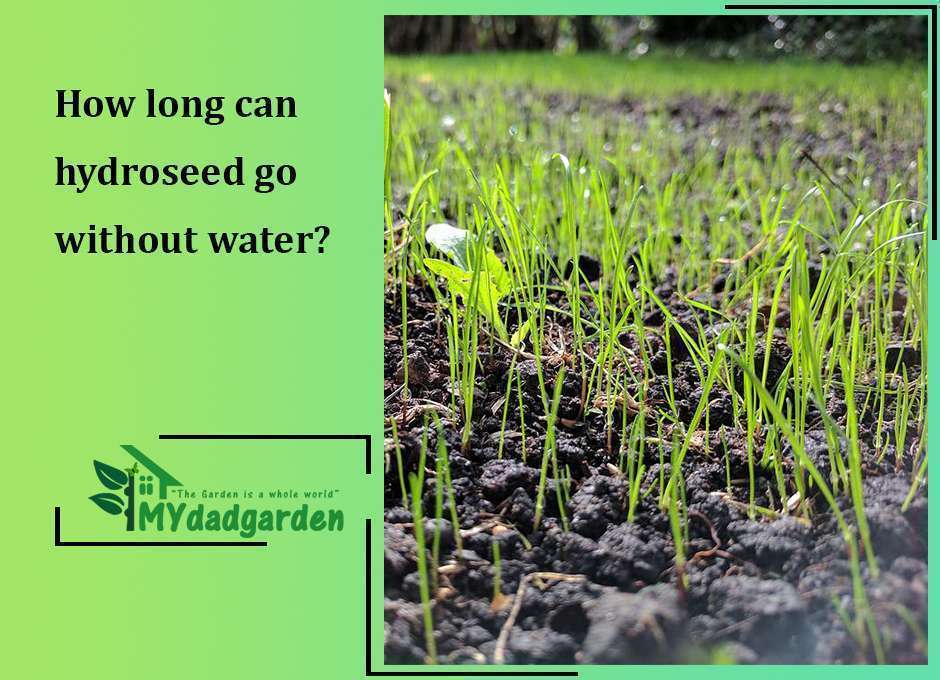How long can hydroseed go without water?
It’s essential to know how long hydroseed can go without water, so you can plan your watering schedule accordingly.
If you’re like most people, you probably don’t know the answer to this question.
We just wrote this to tell you how long hydroseed can go without water, and we’ll also give you some tips on how to care for your hydroseed lawn.
Table of Contents
How Long Can Hydroseeds Go Without Water?
Hydroseeding is applying a mix of water, seed, and fertilizer to lawns. The mix is applied using a hydroseeder, a machine that mixes the ingredients and then sprays them onto the lawn.
Most hydro seeded lawns will only last for one or two days without regular watering.
Hydroseeding is an efficient way to seed a lawn because it evenly distributes the seeds and ensures that they are in contact with the soil.
The main disadvantage of hydroseeding is that it requires more water than traditional seeding methods. As a result, newly seeded lawns must be watered frequently to keep the seeds moist. If the seeds dry out, they will not germinate, and the hydroseed will fail. For this reason, it is crucial to know how long hydroseed can go without water.
However, if you are careful to keep the seeds moist, you can extend the life of your hydroseed by a few days. With proper care and watering, your hydro seeded lawn should last long enough to give you a beautiful, green lawn.

What Is The Best Time To Plant Hydroseed?
Spring is a great time to plant hydroseed because moderate temperatures are ideal for germination. However, late summer/early fall is the best time to plant hydroseed.
The cooler temperatures help the grass seedlings to establish themselves, and the increased precipitation helps to keep the seedlings moist.
In addition, the longer days in late summer/early fall help the seedlings grow more quickly. As a result, planting hydroseed in late summer/early fall is the best way to ensure a healthy and vigorous lawn.
Advantages Of Hydroseed
Hydroseeding is the process of applying a water-based seed mixture to your lawn. It’sIt’s a practical and popular alternative to traditional methods such as sewing by hand or using a drop spreader.
Hydroseeding has several advantages over these other methods.
For one thing, it’s less expensive than sod. In addition, a hydroseed lawn tends to be more uniform and contain a greater variety of grasses than a lawn that’s been seeded by hand.
You can also create your own seed mixture, customizing the mix to suit your needs. And if you have a large area to seed, hydroseeding is generally the most cost-effective option.
So if you’re looking for a fast, easy, and inexpensive way to seed your lawn, hydroseeding is the way to go.

Disadvantages Of Hydroseed
Hydroseeding is a process of using a mixture of seed, water, and fertilizer to grow grass. It is often used on slopes or other areas where it would be difficult to sow seeds by hand. While hydroseeding has some advantages, there are also several disadvantages before starting a project.
Perhaps the biggest drawback of hydroseeding is the amount of water required. The mix must constantly be moist for the seeds to germinate, challenging in dry climates.
In addition, hydroseeding is a precision process—if the mix is too thick or thin, or the seed is not evenly distributed, it can result in a patchy lawn.
Finally, hydroseeding can have a negative environmental impact if the chemicals in the mix are not correctly managed. When considering hydroseeding for your next lawn project, carefully weigh the pros and cons.

Why Is My Hydroseed Not Growing?
A lush, green lawn is the result of healthy hydroseeding. Hydroseeding is applying seed, water, and fertilizer to the lawn using a hose. The mixture is then sprayed onto the lawn, where it will take root and grow.
However, several factors can prevent hydroseeding from being successful. If the lawn is not properly watered, the seed will not have enough moisture to germinate.
In addition, a lack of fertilizer will prevent the grass from getting the nutrients it needs to grow. Poor soil quality can also make it difficult for hydroseeding to take hold.
Finally, mowing too early can damage the young grass blades, preventing them from developing into a strong, healthy lawn. By ensuring that these factors are not an issue, you can ensure that your hydroseeding efforts will be successful.
Will Rain Wash Away Hydroseed?
It’s essential to know how much rainfall your hydroseed can tolerate before it washes away. Different hydroseeding mixtures have different ideal rainfall tolerances based on the type of seed, mulch, and fertilizer used.
Most hydroseed mixtures can tolerate between 1/4 to 1/2 inches of rain per hour without washing away. However, if you’re expecting a downpour or your mix is exceptionally lightweight, you may want to take precautions to prevent erosion.
One option is to build a temporary dam around your hydro seeded area using straw bales or sandbags. This will help redirect the flow of water and keep it from washing away your seeds.
Another option is to apply a quick-drying resin-based bonding agent to your hydroseed mix. This will help create a tough crust that can withstand heavy rains without eroding. If you’re concerned about rain washing away your hydroseed, be sure to speak with a professional seeder about the best way to protect your investment.

FAQ
What kind of grass seed is used in hydroseeding?
While many different grass species can be used for hydroseeding, Bermuda grass is one of the most popular choices. This challenging and adaptable grass can thrive in a wide range of climates, making it an ideal choice for many projects.
In addition, Bermuda grass is quick to germinate and establish itself, which can help to minimize the risk of erosion during the early stages of growth. As a result, this versatile and durable grass is an excellent choice for hydroseeding applications.
Can you DIY Hydroseed?
While it is possible to DIY hydroseed, it is generally best to leave the job to a professional lawn care company. The process requires careful preparation of the soil and the right mix of seed, water, and additives.
A professional company will also have the specialized equipment needed to evenly apply the slurry and ensure that the seeds take root. In addition, they will be able to provide ongoing care and maintenance to ensure that your new lawn stays healthy and looks its best.
Previous Article:Pepper Plant Life Span: How Long do Pepper Plants Live?







